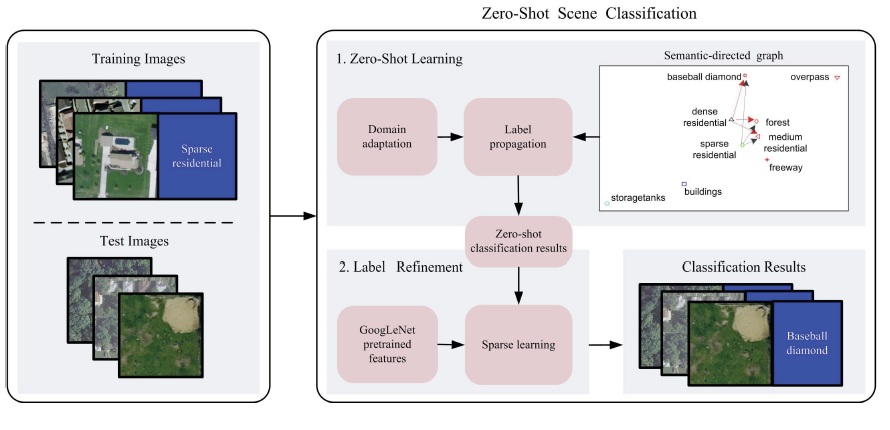- ALL COMPUTER, ELECTRONICS AND MECHANICAL COURSES AVAILABLE…. PROJECT GUIDANCE SINCE 2004. FOR FURTHER DETAILS CALL 9443117328


Projects > ELECTRONICS > 2017 > IEEE > DIGITAL IMAGE PROCESSING
Due to the rapid technological development of various sensors, a huge volume of high spatial resolution (HSR) image data can now be acquired. How to efficiently recognize the scenes from such HSR image data has become a critical task. Conventional approaches to remote sensing scene classification only utilize information from HSR images. Therefore, they always need a large amount of labeled data and cannot recognize the images from an unseen scene class without any visual sample in the labeled data. To overcome this drawback, we propose a novel approach for recognizing images from unseen scene classes, i.e., zero-shot scene classification (ZSSC). In this approach, we first use the well-known natural language process model, word2vec, to map names of seen/unseen scene classes to semantic vectors. A semantic-directed graph is then constructed over the semantic vectors for describing the relationships between unseen classes and seen classes. To transfer knowledge from the images in seen classes to those in unseen classes, we make an initial label prediction on test images by an unsupervised domain adaptation model. With the semantic-directed graph and initial prediction, a label-propagation algorithm is then developed for ZSSC. By leveraging the visual similarity among images from the same scene class, a label refinement approach based on sparse learning is used to suppress the noise in the zero shot classification results.
Concentric Circle-Structured Multiscale Bag-Of-Visual-Words Model, Fast Sparse Coding.
This paper proposes a novel scene classification approach for HSR remote sensing images to recognize images from unseen classes without any visual sample in the training set. In this approach, we first use the word2vec model to map names of scene classes to semantic vectors. A semantic directed graph is then constructed over the semantic vectors for describing the relationships between unseen classes and seen classes. With the semantic-directed graph and knowledge transferred from images in the seen classes by an unsupervised domain adaptation model, a label-propagation algorithm is developed to measure the distance between test images and each unseen class for recognition of the unseen scene classes. To further suppress the noise in the zero-shot classification results, a label refinement approach is developed based on sparse learning.
BLOCK DIAGRAM
